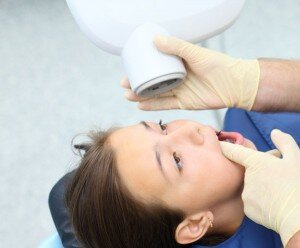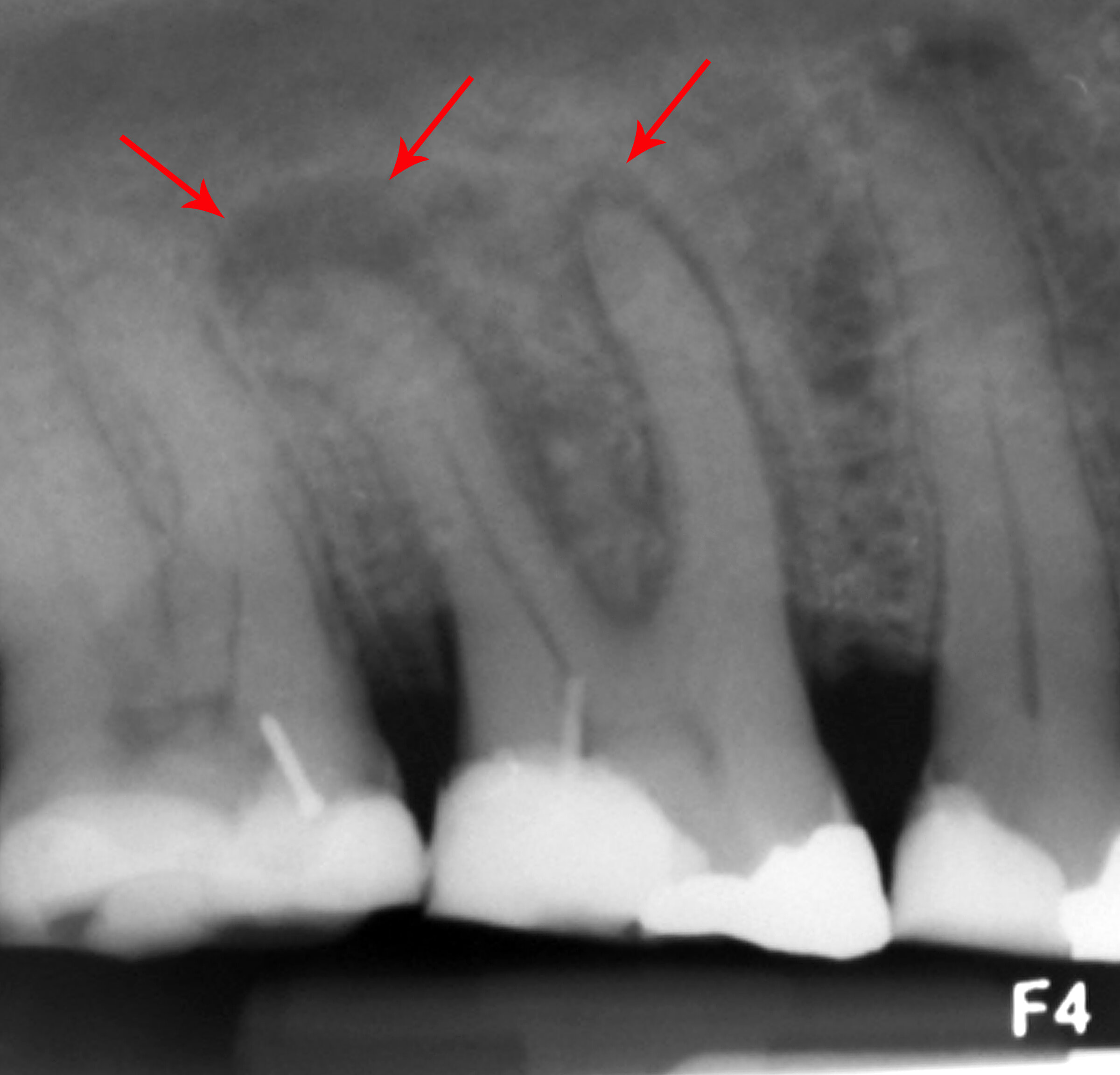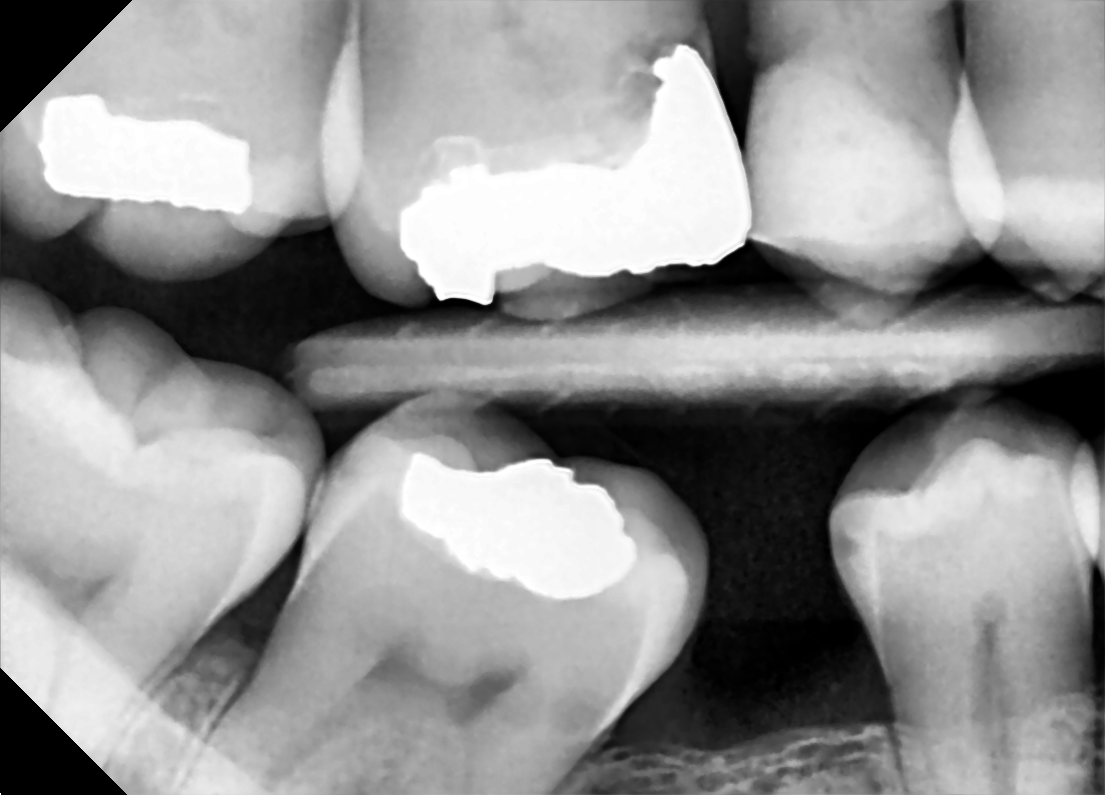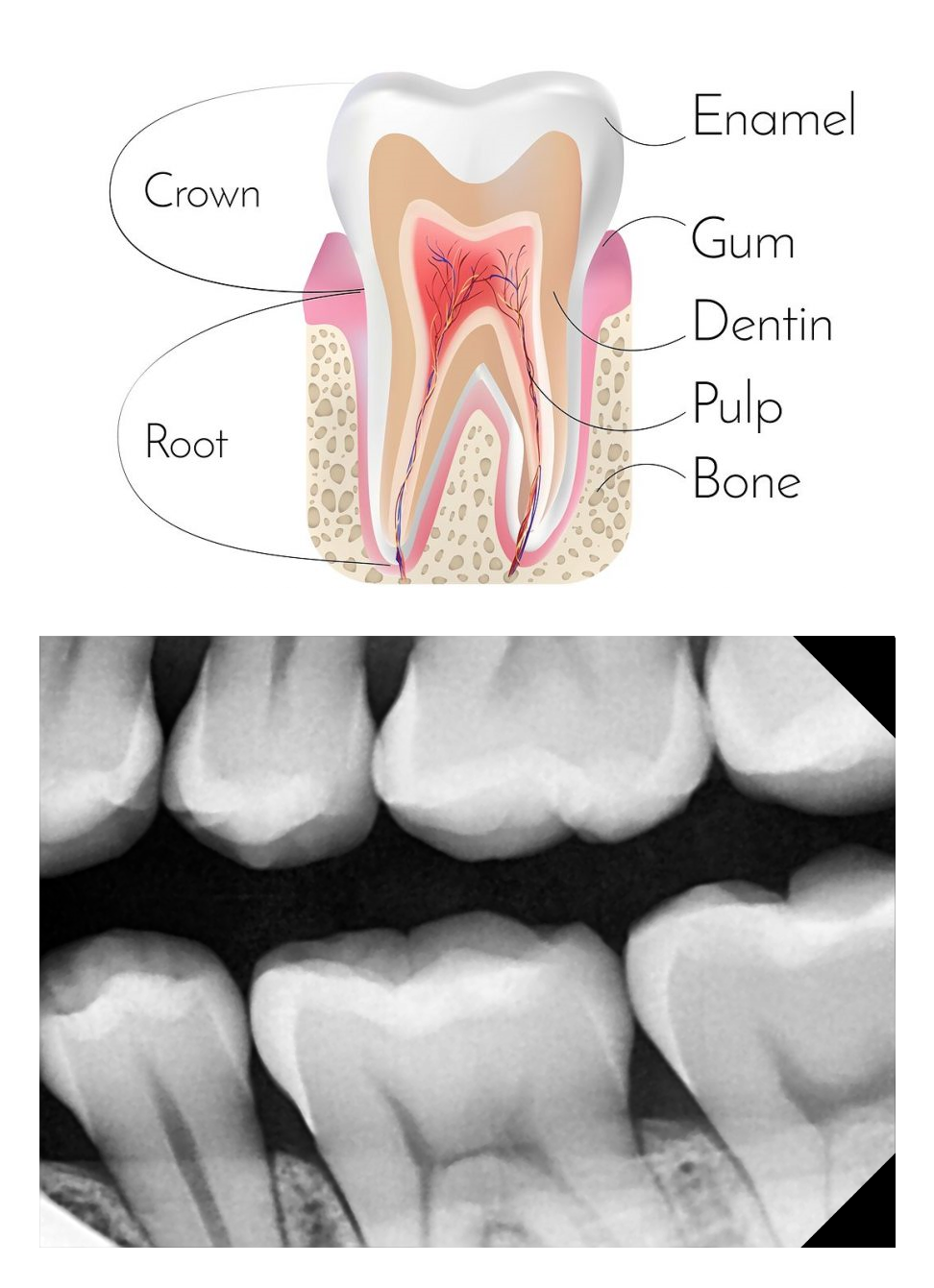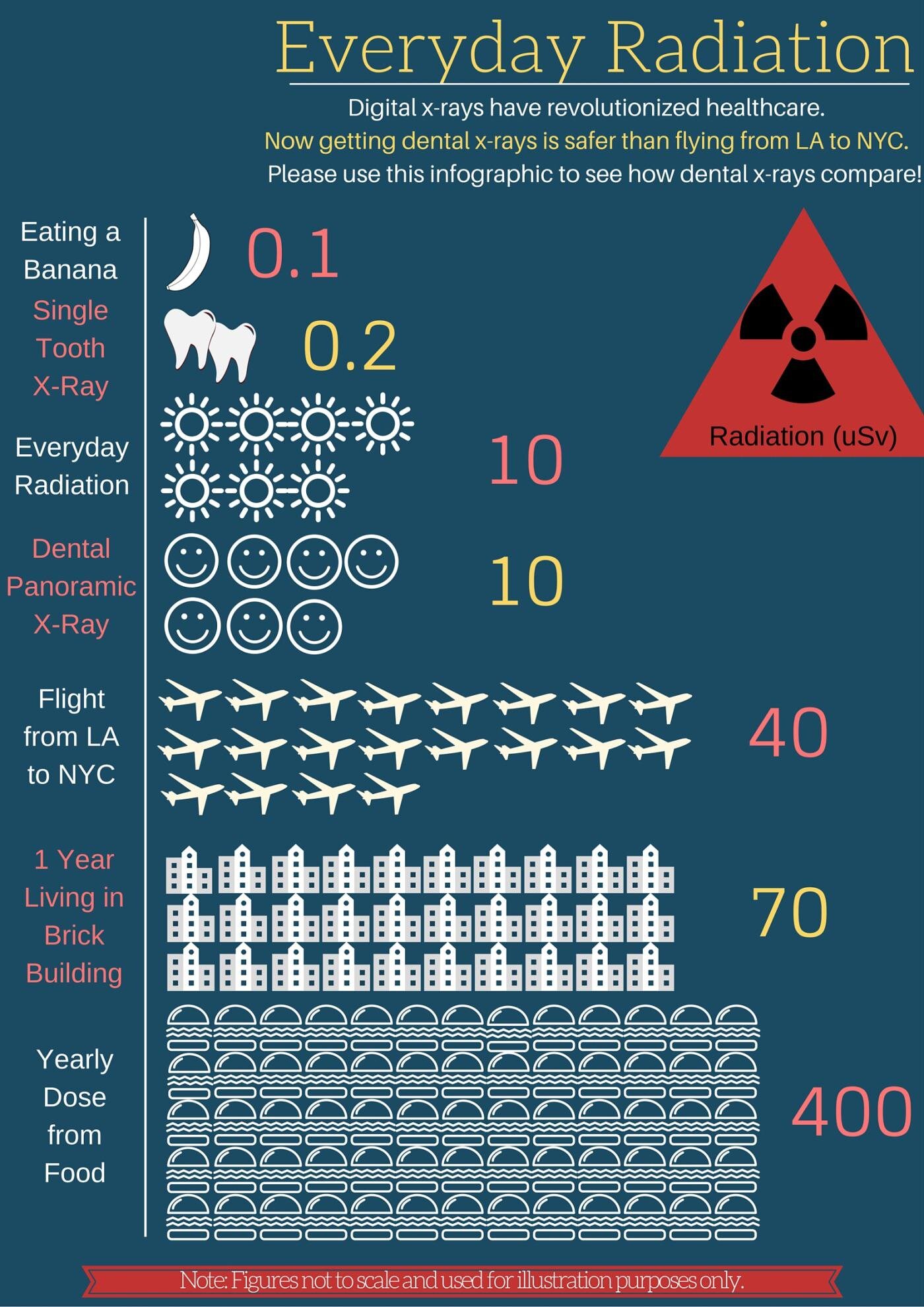Ask the Dentist: What are dental x-rays and are they safe?
It has been a question that I get asked time and time again by many friends, family and patients - what are dental x-rays used for and do I really need to take them? In short, dental x-rays are part of a routine dental examination and check up and they help look in the areas of the mouth that the naked eye does not see. Without dental x-rays, dentists cannot give a definitive diagnosis of their patient’s dental health. In this article, we will discuss questions such as: What are dental x-rays? What do dental x-rays show? What are the different types of dental x-rays? Are dental x-rays safe for children? Are dental x-rays dangerous and are there side effects? Do dental x-rays cause cancer? Are dental x-rays safe during pregnancy? How many dental x-rays is safe? What are the radiation doses for dental x-rays? How often do dental x-rays need to be taken?
Let’s begin!
What are dental x-rays?
Dental x-rays (also known as radiographs) are pictures that show the inner structures of your teeth and the surrounding bone that hold the teeth inside the mouth. A sensor is placed inside the mouth and the x-ray unit points at the sensor to take the dental x-ray. They only need a matter of seconds to take but the benefits are massive if we detect a problem early. It can save a lot of time, potential pain and discomfort and also save a lot of money!
What do dental x-rays show? What are the benefits of dental x-rays?
Dental abscess and tooth decay under dental crown
Tooth decay underneath the surface
Early signs of tooth decay between teeth
They can show small areas of decay in between teeth not visible to the naked eye
They can show the proximity of decay to nerves of the teeth
They can show the health or problems underneath old fillings, root canals, crowns or bridges, and implants
They can show the presence and severity of gum disease including tartar build up and bone loss
They can show dental abscesses or different types of dental infections
They can show any developmental issues of teeth such as malformed teeth, extra or missing teeth etc.
They can show dental cysts and some types of tumour
They can help to show problems as tooth fractures and bone fractures
They can show the proximity of tooth roots and infections to the sinuses
They can show the development and number of teeth inside the mouth
They can show the presence wisdom teeth and if there is a need for them to be removed
They can show the amount of bone needed for dental implants
It is important to note that not all dental x-rays show the same information, because it depends on the type of x-ray being taken and why it is being taken by your dentist. It’s also important to know that x-rays like photos are only a snapshot of our mouths at that point in time. They will not tell us how long a tooth has been decayed for, how long the infection has been on the tooth or how quickly the infection will spread.
What are the different types of dental x-rays?
The 3 main types of dental x-rays include:
Bite Wing X-ray
Bite Wing - These are routine dental x-rays that help to look in between teeth to ensure that there aren’t any cavities, tooth decay underneath the tooth structure. They usually won’t show the whole length of the tooth because their purpose is to look at the gaps between teeth.
Periapical X-ray
Perapical (pA) - These are dental x-rays often taken to look at the whole length of the tooth to help look for signs of cracks, abscesses, infections, nerve problems, bone defects. These are often taken in emergency appointments or when the tooth has chipped and needs a filling.
OPG X-ray
Orthopantomography (OPG) - These are dental x-rays that look at the whole jaw. They show the whole anatomy of the upper and lower jaw bones. They are used to assess the health of the bone surrounding the teeth. They are used especially for patients who have gum disease or periodontal disease. They are often used to look at growing children and the potential for any missing teeth. They can be used to help look at wisdom teeth and help assess if there is a need for them to be removed. They are used to look at broken teeth. They give a good summary of everything going on inside the mouth, but you will often still need Bite Wing x-rays or periapical x-rays to accompany OPGs for proper assessment of tooth decay or dental infections.
How often do dental x-rays need to be taken?
Tooth decay underneath the old metal filling on upper molar tooth
Firstly, dental x-rays don’t always need to be taken every single time you see a dentist. But according to the American Dental Association, it is recommended that your dental bite wing x-rays are updated every 12-18 months if you’re a high risk patient for tooth decay, and every 2 -3 years if you’re a low risk patient. What determines whether you’re a high risk or low risk patient depends on your oral hygiene, your diet, your lifestyle, your medications and various other factors.
Why do dental x-rays need to be taken? Even if you have regular 6 monthly dental check ups, we can never be 100% certain of what’s going on underneath the tooth structure until we see the dental x-rays. They are safe and takes a few seconds, but dental x-rays help us to avoid missing any problems that may be present but go unnoticed.
Dental x-rays may also be taken in situations where there is a toothache, dental abscess, chipped tooth, during root canal treatment or when you dentist suspects of a problem.
What do dental x-rays show? The dental x-rays will show the 3 main layers of the tooth:
| Tooth Layer | Description |
|---|---|
| Enamel | Outer white layer of the tooth on the x-ray. Any signs of decay in this layer can usually be treated with a simple dental filling. |
| Dentine | Middle light grey layer of the tooth on the x-ray. Makes up the majority of the tooth structure. Any signs of decay into this layer can be treated with a deeper filling but the tooth may need root canal treatment if its close to the nerve |
| Pulp (nerve) | Dark grey inner layer of the tooth. The black space is where the nerve and blood supply of the tooth lays. Any signs of decay in this layer is very serious and will involve extractions or root canal treatment |
Why are dental x-rays safe? Are dental x-rays dangerous and are there side effects? How many dental x-rays is safe? What are the radiation doses for dental x-rays?
Blacktown Dentist Seven Hills Dentist Everyday Radiation
Dental x-rays are safe for children and adults of all ages. And while dental x-rays do involve radiation, the levels of radiation dosages are very low and safe, equivalent to doses you’d be exposed to simply from travelling on a 1-2 hour flight on a plane. To put it in numbers - Two bite wing x-rays would emit 0.005mSv of radiation. Travelling from Sydney to Perth would expose you to 0.009mSv. An OPG emits 0.01 mSv. So essentially you will get less radiation from your routine 2 Bite Wings and OPG, than a return trip from Sydney to Perth. And you only take those Bite Wings and OPG x-rays once every 2 years.
What this also means is that dental x-rays are safe even for pregnant women if they are required to take them. What needs to be understood very clearly is that radiation is everywhere around us. Whether it be living in a brick house, or being closer to the sun during a plane ride - they all expose us to extra radiation. But that doesn’t mean we stop living in our brick houses nor does the busy frequent flyer stop travelling. They don’t even think twice about the extra radiation they’re exposed to.
SO why are we so afraid about whether dental x-rays are safe or dangerous? It’s all about education and understanding. The chart above us helps us to understand the comparative levels of every day radiation we are all exposed to.
And with time and technology, there are many ways which help to reduce radiation exposure in dental x-rays. These include the following:
Lower X-ray dose — the most important way patients are safe from radiation is by dentists limiting the dose that is emitted from the x-ray machine. This can be done by limiting the size of the cone beam on the machine to less than 7 centimetres in diameter. The x-ray machines are also reinforced which means there is little radiation exposure beyond the diameter of the beam.
Improved film — The quality and speed of films and senors used for dental x-rays has significantly improved. Improvements include requiring less dosage or radiation exposure to get the same results. Dentists who use the fastest speed film (F-Speed) are able to limit the amount of radiation needed to obtain a clear x-ray picture.
Digital radiography — The use of digital X-rays reduces radiation by as much as 80%. At Capstone Dental, we use digital x-rays for this reason. It also makes treatment and diagnosis more efficient and comfortable for our patients
Film holders — Dental clinics used to ask dental patients to help in holding the x-ray film inside their mouths with their fingers. That exposed unnecessary radiation to the fingers but now with film holders, we no longer need to do that.
Regulatory Requirements — Our Australian state health departments require licenses and routine maintenance checks for dental x-ray machines to ensure they are safe and accurate.
Lead Aprons — A lot of dental clinics used to regularly place lead aprons over patients to help minimise radiation exposure, but nowadays with modern technology and low dosages, the aprons offer more of a peace of mind than any statistically significant protection.
Limit the use of X-rays — Your dentist should only take x-rays when they believe they are necessary to help make an accurate dental assessment or diagnosis. This will especially important when you come in with a chipped tooth or toothache and we don’t know what is happening underneath the tooth structure and bone.
Do dental x-rays cause cancer?
No. There is no conclusive evidence or research which shows that dental x-rays cause cancer. There are numerous studies which claim as such, but at best, there is an association, but there is no cause and effect proven in regards to dental x-rays and cancer. This is important to understand. For example, if there was a study on people who tripped over on the streets, and the results showed that a higher number of people who tripped over on the street, also were cheese eaters, we can’t conclude that eating cheese causes people to trip over on the streets. We can only say that there is an association of tripping on the streets and eating cheese. They’re VERY different statements. The American Dental Association published an article that helped to explain the flaws and inconsistencies of one particular study here in regards to dental x-rays and cancer.
Are dental x-rays safe during pregnancy?
Yes, yes and Yes. Generally, there is far more at risk to the foetus from poor diagnosis and inadequate treatment than taking a dental x-ray. Foetuses require their mothers to be healthy and well, as they are completely dependent on the maternal blood supply. So their mothers need to be well oxygenated, have normal temperature, have normal blood pressure, be well nourished, free of pain and anxiety.
The safe dose of radiation for fetuses is regarded as up to 5-10 millisieverts. Above this level, a detailed risk benefit analysis, detailed documentation and a documented patient consent is required. At less than 1 millisievert from a dental x-ray, the risk to the fetus is minimal, and the consent process can be more routine. Dental radiation involves vastly lower foetal radiation doses than the upper limit of acceptable medical radiation exposure.
There is no detectable difference in cancer rates in children at radiation doses less than 5 millisieverts compared to background radiation. So at the extremely small doses involved in dental radiation, this is not an issue that needs to be discussed further than what we have in front of us in the scientific evidence.
What is important to know is that untreated infection and pain is risky in pregnant women - they are vulnerable to sepsis (serious infection), and sometimes, dental sepsis can be the source of this, so it is important that your dentist does what they can to keeping pregnant women safe and well from an oral health perspective. Pain and infection increases the risk of adverse pregnancy outcomes, including miscarriage, intrauterine growth restriction, poor placental perfusion, and premature birth. These risks far outweigh the risks of radiation involved in diagnostic imaging from dental x-rays.
We hope you’ve enjoyed this blog by Dr Kenneth Chan from Capstone Dental. Please share it with your family and friends. We firmly believe in educating our patients to help them understand how to achieve good oral health. Are you looking for modern and gentle dentist who will look after you and your family? Then welcome to Capstone Dental - we are within minutes from Toongabbie, Prospect, Blacktown, Lalor Park, Baulkham Hills, Girraween, Kings Langley, Bella Vista


